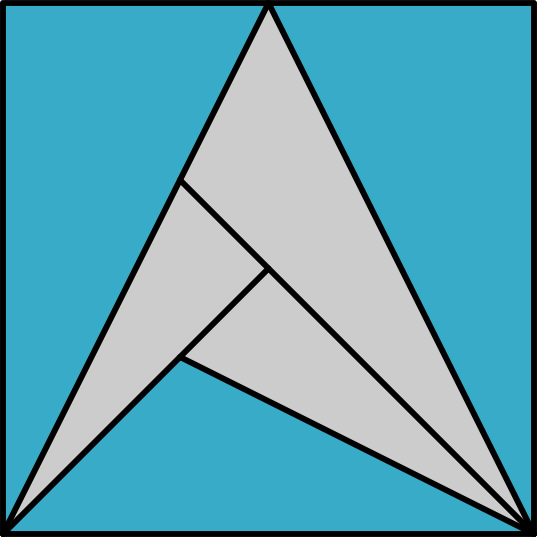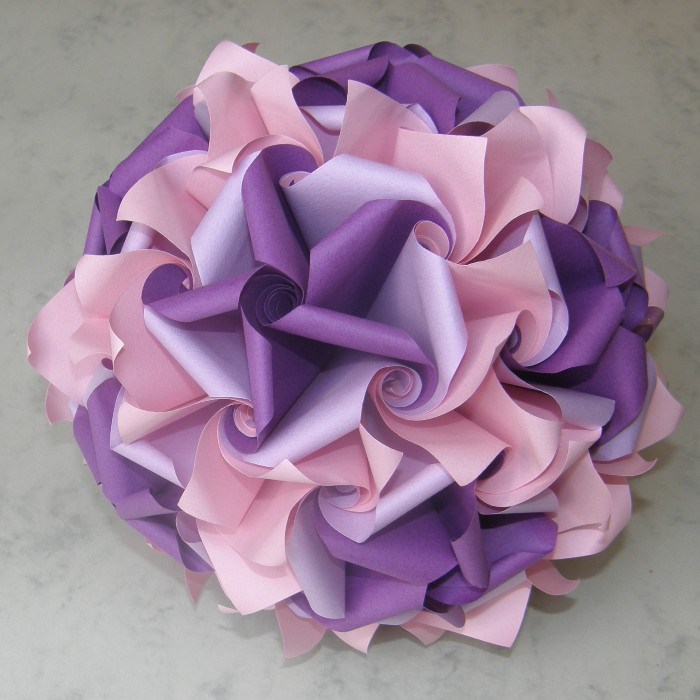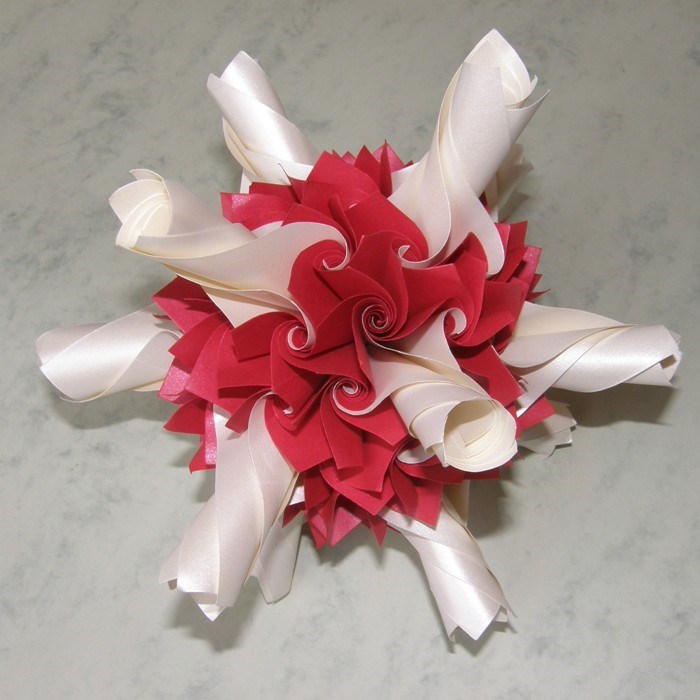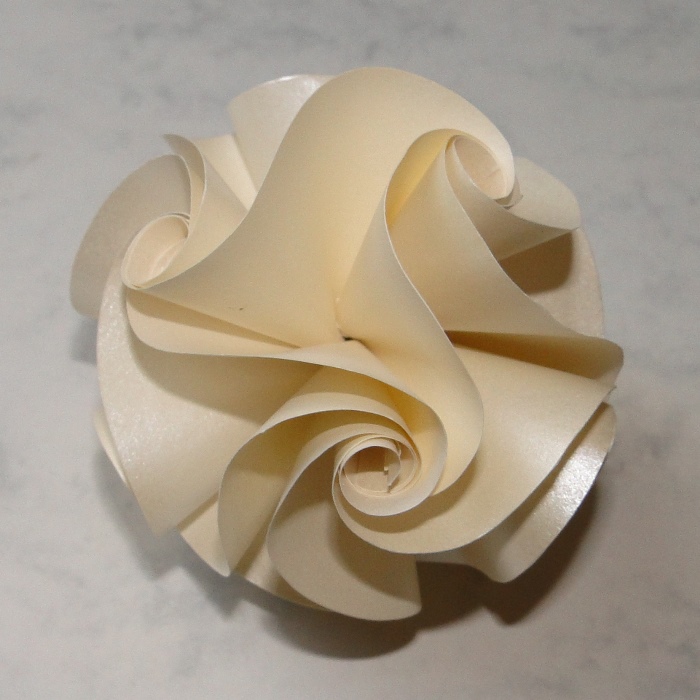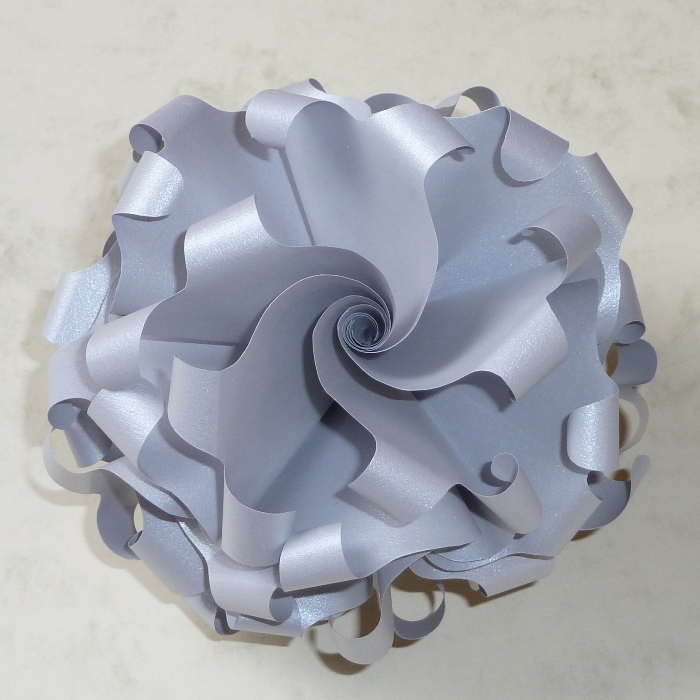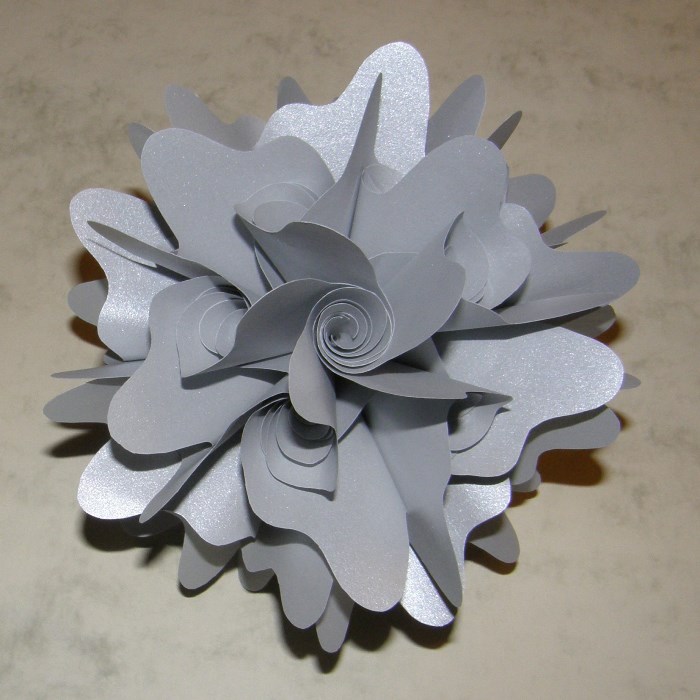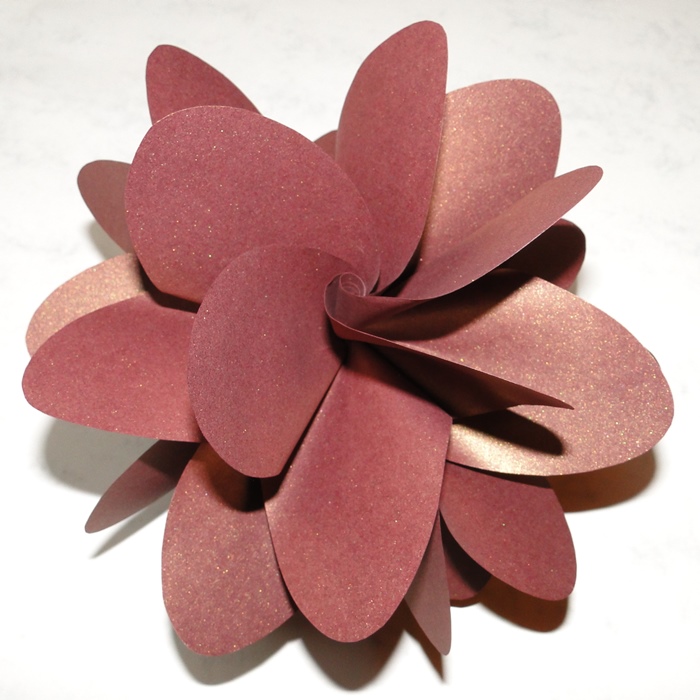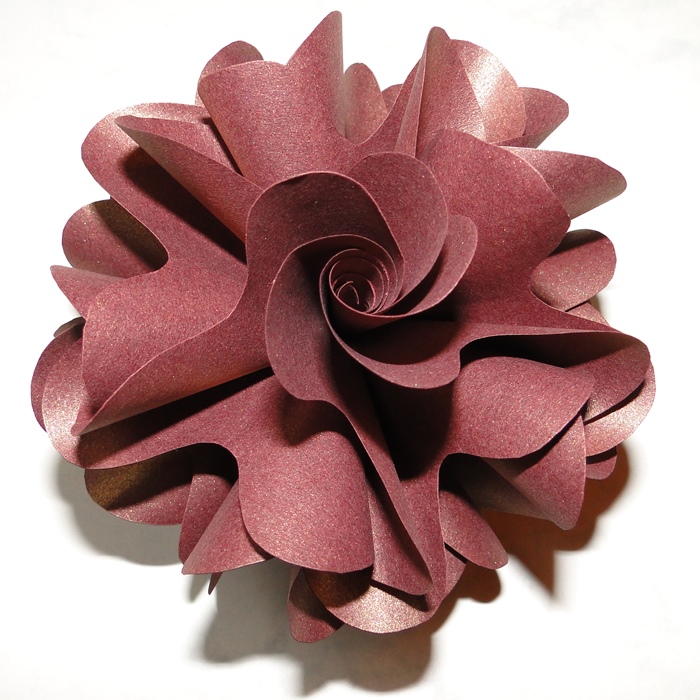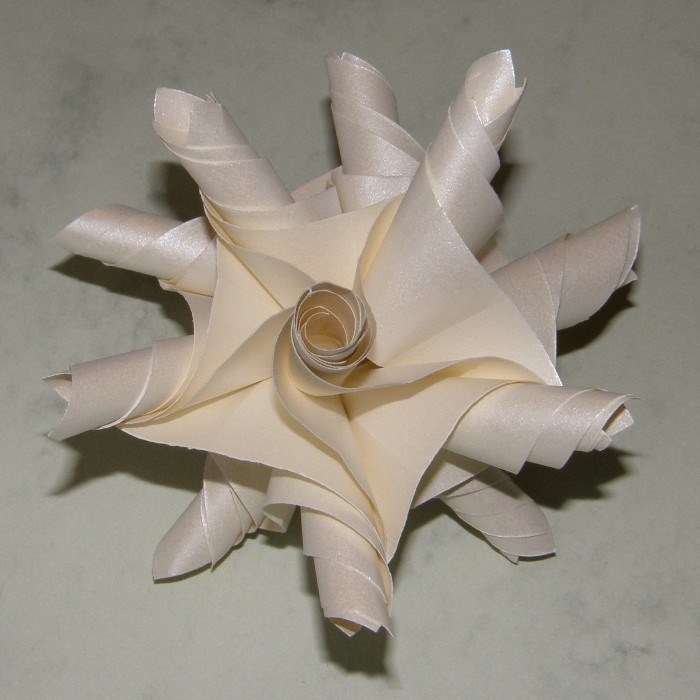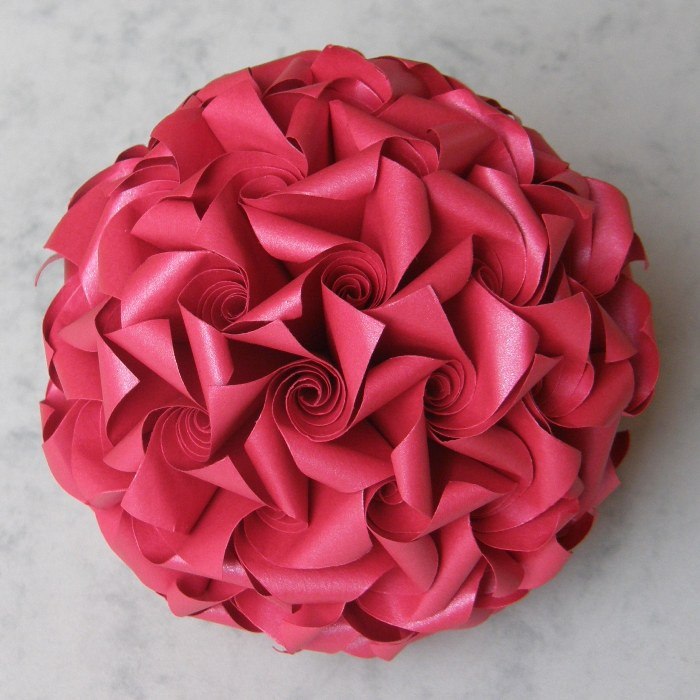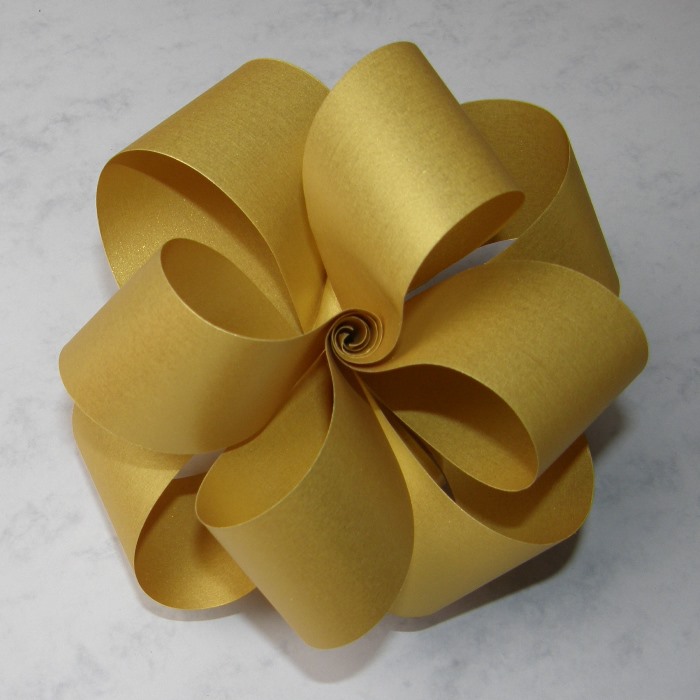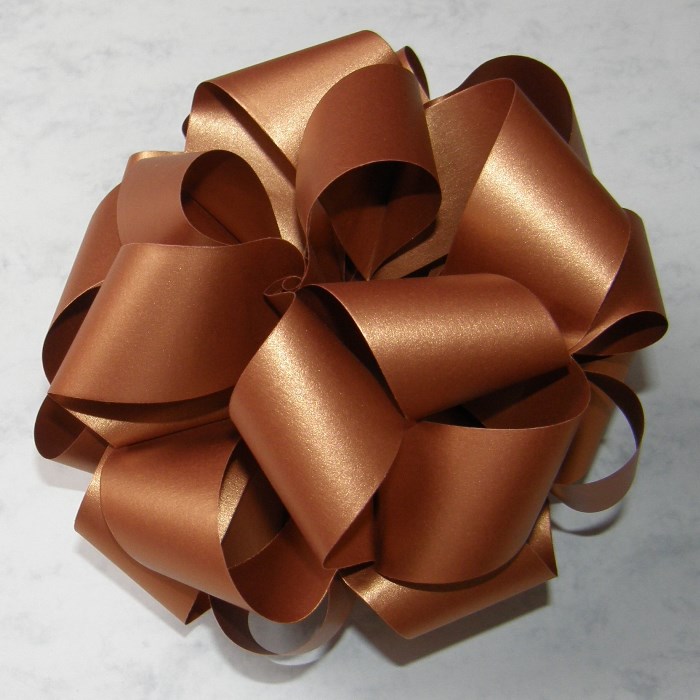Is it still origami or already another art of transformation of paper into 3D forms?
Separate units do not have any single crease line.
What keeps them together is mathematics (the structure), physics (friction), paper (elasticity). If any of these components is missing everything would fall apart.
This series of artworks resulted from the investigation of the problem of minimal origami construction.
How many creases can we remove to have still an origami object?
The effect is completely surprising as we do not need any fold at all.
